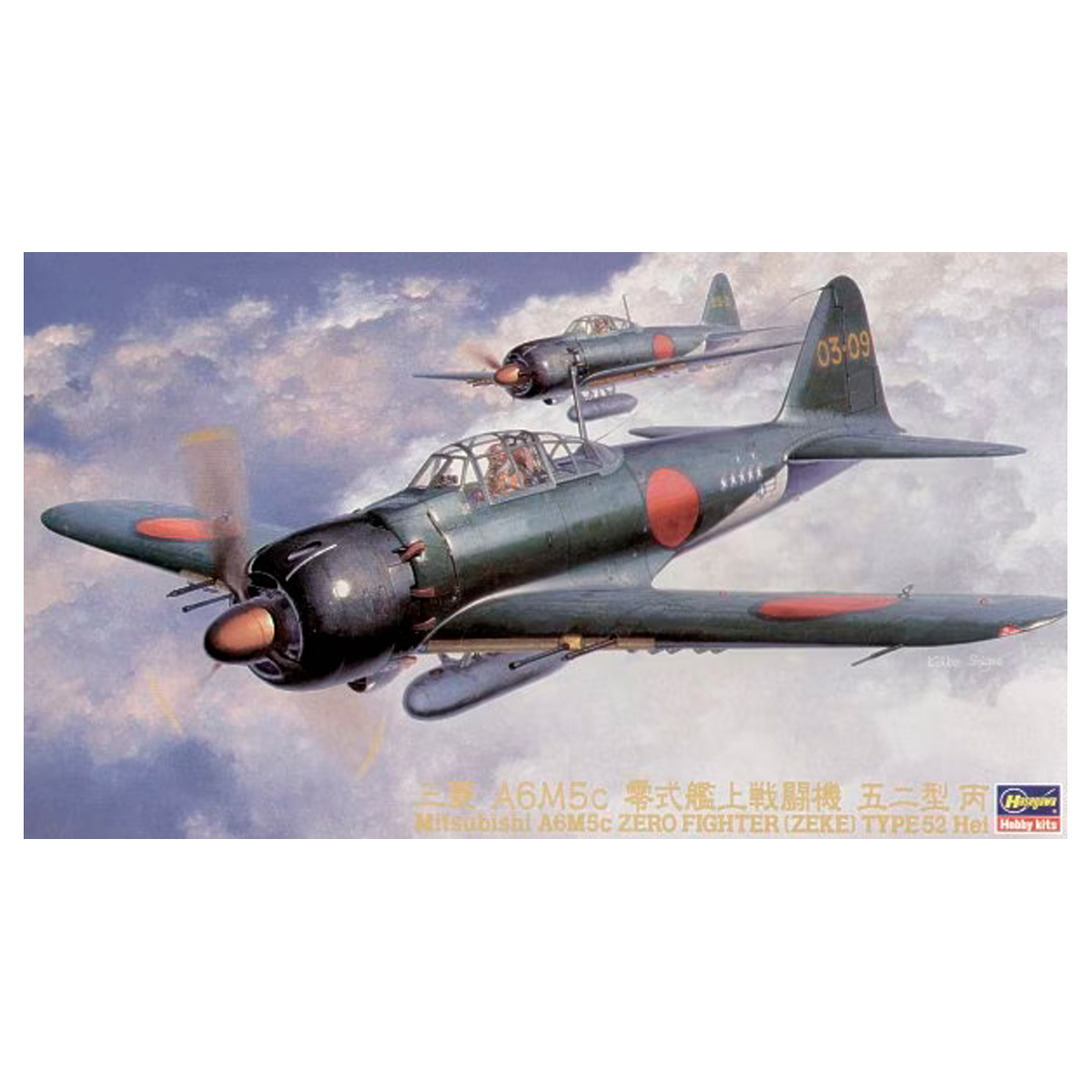JT72 – 1/48 A6M5C Zero
22,50€
Hay existencias

*Please check our Privacy Policies to see how to we use your personal data.
*Por favor revisa nuestra Política de Privacidad para ver como tratamos tus datos personales
Scale … 1:48
Part number ……… JT72
By 1943, the Zero 21, which had continued to make great strides in the early stages of the war, was
For the new U.S. Army and Navy fighter jets that keep coming up
It came to be inferior in terms of speed and firepower.
So, the Type 52 was developed following the Type 32 and Type 22, and
The wingspan was shortened from 12 meters in the 21 and 22 models to 11 meters.
The cowling was redesigned and equipped with a thrust-only single exhaust pipe to increase the speed.
As a result, the maximum speed was 565km/h, 25km/h faster than the Type 22.
In addition, the 20mm machine gun in the wing was replaced with a belt-fed Type 99 Type 2-4 20mm machine gun.
Type 52 A with thicker wing plating to increase the dive speed limit
was produced, but the Navy’s demands continued to grow.
Type 52 B, the right side of the 7.7mm machine gun in the nose part of the nose was reinforced to 13mm machine gun
With the Type 52 C that added a 13mm machine gun to the outside of the 20mm machine gun on both wings of the Type B, and
Approximately 6,000 of the Type 52 series were produced by Nakajima and Mitsubishi, and
It continued to fight until the end of the Pacific War.
Data] Zero Type 52 Hei
Crew: 1 person
Overall width: 11.00m
Length: 9.121m
Height: 3.57m
Wing area: 21.3m2
Weight: 2,155kg
Total weight: 3,150kg
Engine: Nakajima Sakae Type 21
Liftoff power: 1,130hp
Maximum speed: 565 km/h (6,000 m altitude)
Armament: 1 x 13mm machine gun, 2 x 20mm machine guns + 2 x 13mm machine guns
Escala … 1:48
Número de pieza ……… JT72
En 1943, el Zero 21, que había seguido dando grandes pasos en las primeras etapas de la guerra, fue
Para los nuevos aviones de combate del Ejército y la Armada de EE. UU. Que siguen apareciendo
Llegó a ser inferior en términos de velocidad y potencia de fuego.
Entonces, el Tipo 52 se desarrolló siguiendo el Tipo 32 y el Tipo 22, y
La envergadura se redujo de 12 metros en los modelos 21 y 22 a 11 metros.
La capota fue rediseñada y equipada con un solo tubo de escape de empuje para aumentar la velocidad.
Como resultado, la velocidad máxima fue de 565 km / h, 25 km / h más rápido que el Type 22.
Además, la ametralladora de 20 mm en el ala fue reemplazada por una ametralladora Type 99 Type 2-4 de 20 mm alimentada por correa.
Tipo 52 A con revestimiento de ala más grueso para aumentar el límite de velocidad de inmersión
se produjo, pero las demandas de la Marina siguieron creciendo.
Tipo 52 B, el lado derecho de la ametralladora de 7,7 mm en la parte de la nariz se reforzó con una ametralladora de 13 mm
Con el Tipo 52 C que agregó una ametralladora de 13 mm al exterior de la ametralladora de 20 mm en ambas alas del Tipo B, y
Aproximadamente 6.000 de la serie Type 52 fueron producidos por Nakajima y Mitsubishi, y
Continuó luchando hasta el final de la Guerra del Pacífico.
Datos] Tipo cero 52 Hei
Tripulación: 1 persona
Ancho total: 11,00 m
Eslora: 9.121m
Altura: 3,57 m
Superficie alar: 21,3m2
Peso: 2,155kg
Peso total: 3,150 kg
Motor: Nakajima Sakae Tipo 21
Potencia de despegue: 1130 CV
Velocidad máxima: 565 km / h (6.000 m de altitud)
Armamento: 1 ametralladora de 13 mm, 2 ametralladoras de 20 mm + 2 ametralladoras de 13 mm





 Solicitud de ficha producto tipo SDS / Seguridad de producto
Solicitud de ficha producto tipo SDS / Seguridad de producto